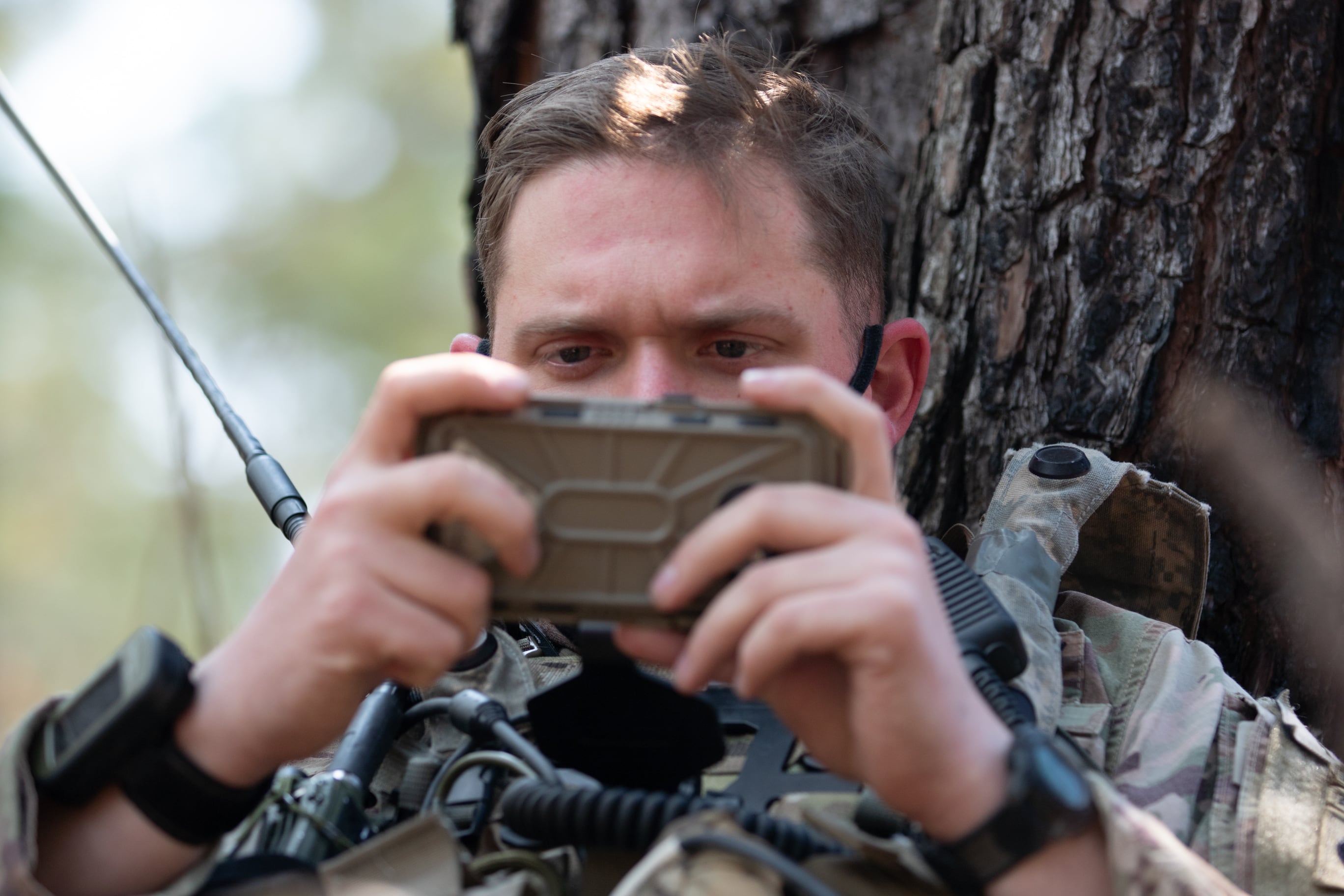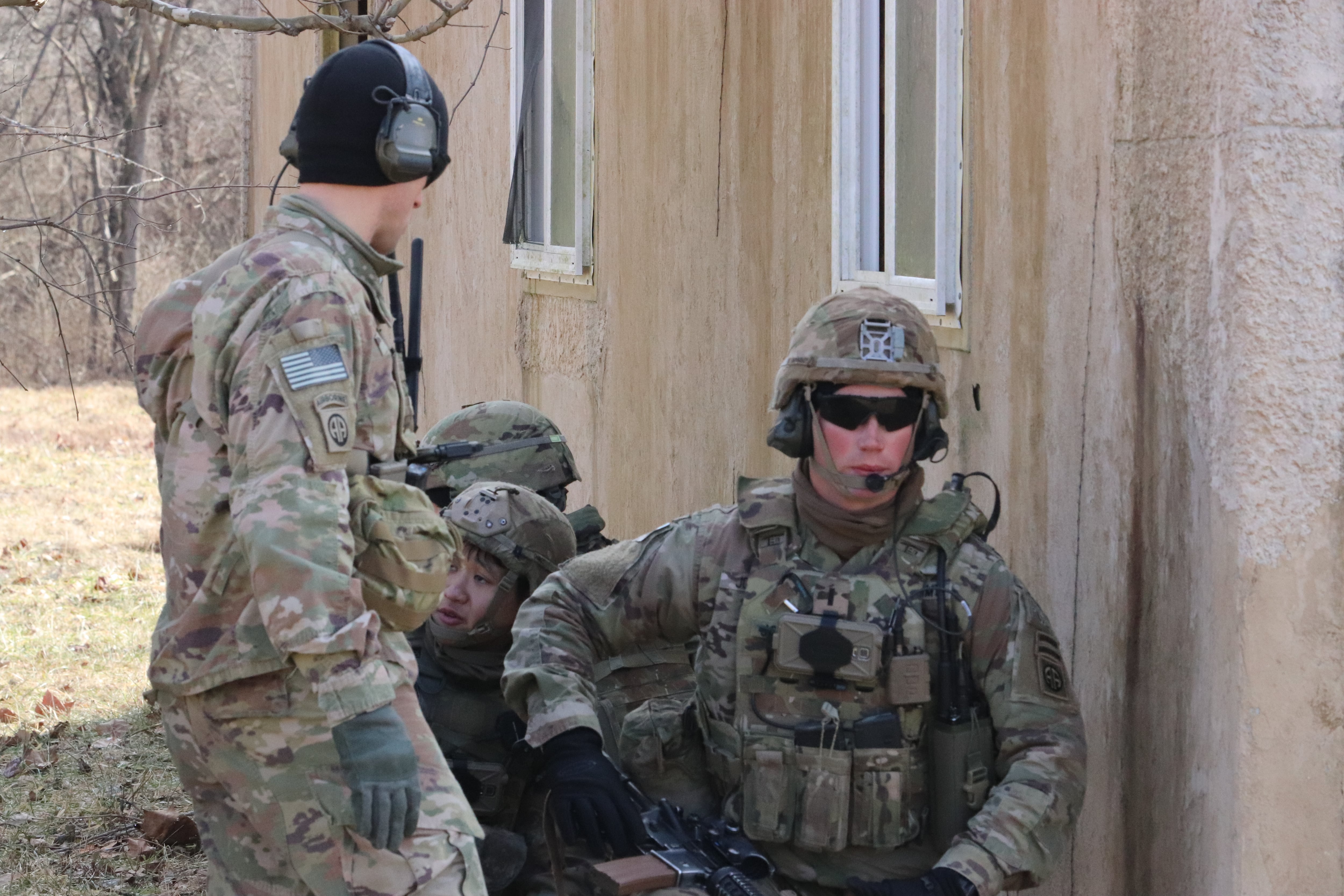JOINT BASE MYER‐HENDERSON HALL, Va. — The U.S. Army will begin implementing advanced satellite communications technology to increase network resiliency as part of its next iteration of tactical network tools.
Adding low-Earth orbit and medium-Earth orbit capabilities commercial satellite constellations into the service’s tactical network repertoire is part of the service’s effort to shift to dispersed battlefields, instead of the fixed fiber communications and forward operating bases that defined the last two decades of war in the Middle East.
As part of the service’s next delivery of tactical network tools, known as Capability Set ’23, Program Executive Office for Command, Control, Communications-Tactical will use “existing” MEO capabilities, considered more mature than LEO, to support the new battlefield communications, according to Rich Hoffman, lead electronics engineer for SATCOM at the C5ISR Center.
PEO C3T and the Network Cross-Functional Team officials hosted reporters at Joint Base Myer-Henderson Hall this week for a presentation of new network tools, including new tactical radios, satellite terminals and command post network infrastructure.
The preliminary design review process for Capability Set ’23, which just concluded this week, includes an initial low-Earth orbit satellite connection “at the halt” to support the command posts.
But to support the dispersed and joint war-fighting operations of future wars in places such as the Indo-Pacific, the Army needs several options to route communications in case one option is interfered with by an adversary.
“Look at this as just yet another layer. LEO, MEO, GEO — if any one of those layers may not be available or taken out” there are other options, Brig. Gen. Robert Collins, the leader of PEO C3T. “We are not going all in on a single layer.”
RELATED

The Army is modernization its tactical network through deliveries of new network technologies delivered every two years. The tactical network team is currently fielding Capability Set ’21, which focused on enhance immediate network needs. The first brigade of the 82nd Airborne Division has been fully fielded. The 173rd Airborne Brigade in Italy is receiving its new technology now. Fielding started for the third brigade of the Hawaii-based 25th Infantry Division, while the third brigade of the 82nd Airborne will start to receive the tools starting in July.
Capability Set ’23 is focused on strengthening the resiliency of the network and increasing throughput capabilities. Ultimately, the new SATCOM capabilities will deliver PACE plans — primary, alternate, contingency and emergency — to the tactical edge.
“Before we were kind of limited to get kind of primary and alternate sometimes but necessarily wouldn’t have a contingency or emergency,” said Col. Rob Ryan, director of operations for the Network Cross-Functional Team. “Having pace at that tactical edge allows the company commander that maneuverability and the agileness to make decisions and inform decisions up [the chain of command and] leverage assets that may be beyond brigade, and that’s critical in the multidimensional fight.”
The service’s turn to new satellite constellations is a major piece of boosting the resiliency of its tactical communications network, providing another option to communicate to servicemembers spread around a wide area if other communications links are jammed. Prototyping new SATCOM capabilities has been a major initiative for the C5ISR Center, efforts which have been boosted by $30 million its partners at the Network Cross-Functional team received in FY20 for prototyping efforts.
The pivot to include MEO and LEO has significant implications on the battlefield, Hoffman said.
“Currently on the tactical battlefield, we rely on geosynchronous satellite or beyond-line-of-sight connectivity,” Hoffman said. “So when we have those longer ranges, we’re reliant on a single geosynchronous connection. In the future, we want to leverage multiple connections to have resiliency, add additional throughput ... and add reduced latency. So things like sensor-to-shooter, those latency times are really important.”
The end goal, Hoffman said, is to integrate LEO and MEO with the current GEO satellites.
“We want to get to integrated terminal capabilities where we can select the constellations that we’ve leveraged for our communications based on what’s available and have the terminal there to be able to support that both on the move and at the halt,” Hoffman said.
RELATED

While Capability Set ’23 will have some of the new SATCOM capabilities, the tactical network team expects to take full advantage of a more mature LEO and MEO technologies for Capability Sets ’25 and ’27.
The difference between the GEO capabilities and future commercial SATCOM links is “night and day,” according to Joe Welch, director of the C5ISR Center. The LEO and MEO capabilities allow for higher data throughput, more transmission flexibility, reduced latency and cost savings.
“Take a look at the terminals that we’ve got right now supporting fixed command posts ... you have to coordinate for the channel days or months in advance if you’re using military channels, which are which are constrained, or pay a lot for the throughput for a specific channel,” Welch said. With the commercial SATCOM terminals, “you’re just paying for the service that you’re using. The satellites ... they’re so much closer to the Earth that the amount of throughput that we can put through it is an order of magnitude [higher].”
LEO satellites sit below 1000 kilometers from the Earth, while GEO sits around 35,000 kilometers, providing much faster throughput. The commercial SATCOM terminals for future capability sets are also far smaller than current satellites, just a half a meter in diameter versus eight feet right now. That allows for faster data routing to its destination and increased mobility for soldiers.
“I can tell you that [latency] on some of these multi-hop geosynchronous could be a second plus, [but now] you’re talking milliseconds,” Collins said. “It’s a fraction and the megabits [are] the charts and the latency dramatically reduced. Every little bit counts on the future battlefield, not only on applications, but when you start talking hypersonics and in future sensor-to-shooter, it’s significant.”
Adopting LEO and MEO satellite constellation capabilities requires a different type of antenna than the Army currently uses. Because GEO satellites are in sync with the movement of the Earth, antennas have to be pointed at the satellites. Because the LEO and MEO satellites are closer, they move around more. To adapt to that, the Army has to use phased array antennas, where the direction of the beams of radiowaves can be steered without using the antennas, because “you have to track lots of satellites that are constantly going overhead very rapidly,” Welch said.
The tactical network team is also grappling with how to build the terminals to withstand rugged terrain while mounted on vehicles, specific military requirements that commercial industry doesn’t inherently build for.
“We don’t drive down the highway as much as we drive over rough terrain,” Hoffman said.
Andrew Eversden covers all things defense technology for C4ISRNET. He previously reported on federal IT and cybersecurity for Federal Times and Fifth Domain, and worked as a congressional reporting fellow for the Texas Tribune. He was also a Washington intern for the Durango Herald. Andrew is a graduate of American University.








